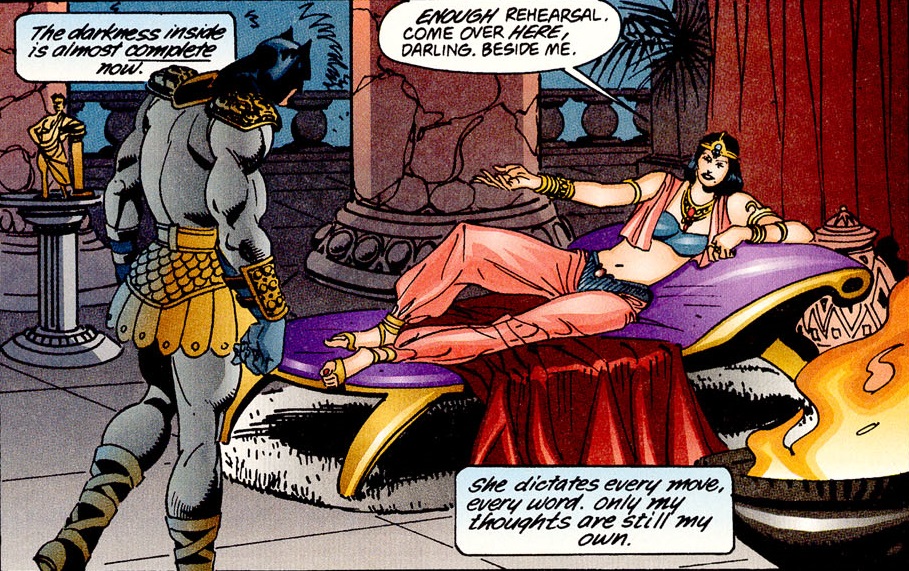Longtime readers won’t be too surprised to find out that, as an unabashed cinephile, I am fascinated by Gotham City’s film culture. In fact, throughout the years, I think I’ve managed to piece together some of its key features…
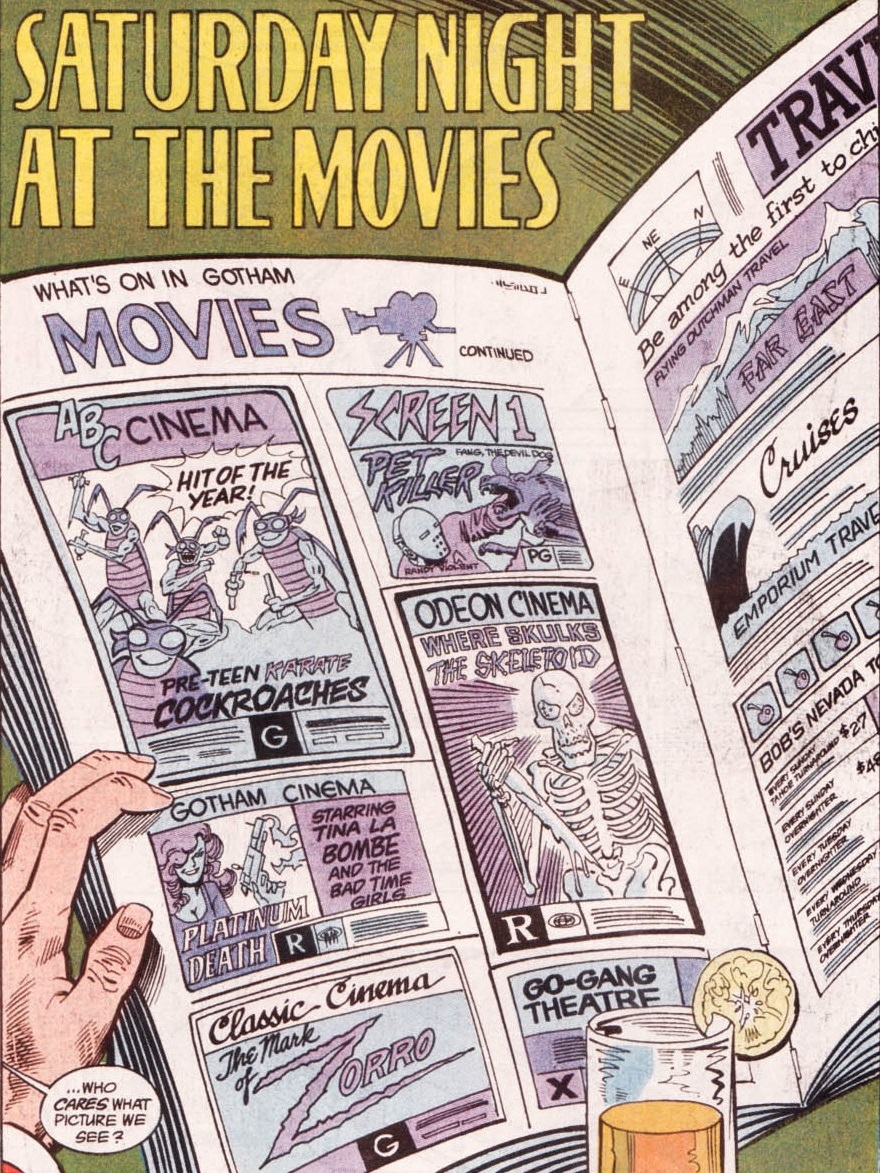 Batman #459
Batman #459
Let’s start with the obvious: Gotham cinemas are really into replays. The Mark of Zorro seems to show up on the big screen every once in a while (especially if you refuse to believe the most recent versions of Bruce Wayne are over eighty years old). A key plot point of Batman #274 concerns a week-long cycle of revivals starring Humphrey Bogart and the classic story ‘Death Strike at Midnight and Three!’ reaches its climax at a Buster Keaton festival. Writers often use old pictures as shorthand to establish a recognizable mood, like in Batman #520, where Doug Moench conjures up a romantic date between Harvey Bullock and his nurse by having them attend a double-screening of An Affair to Remember and Sleepless in Seattle.
That said, I am much more interested in the fictitious movies that play on Gotham’s screens. Rather than cynically view these fake films as a DC strategy to avoid lawsuits or as writers being cheeky about current trends, I prefer to think that Gotham City has a whole line of cinemas living off of mockbusters and shameless cash-ins!
For instance, the city’s movie theatres sure screen a lot of rip-offs of the works of Sly Stallone and Arnold Schwarzenegger…
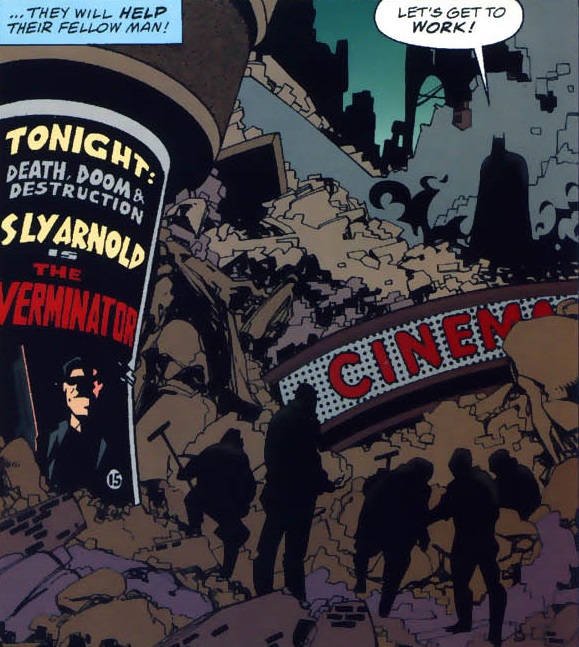 Shadow of the Bat #74
Shadow of the Bat #74
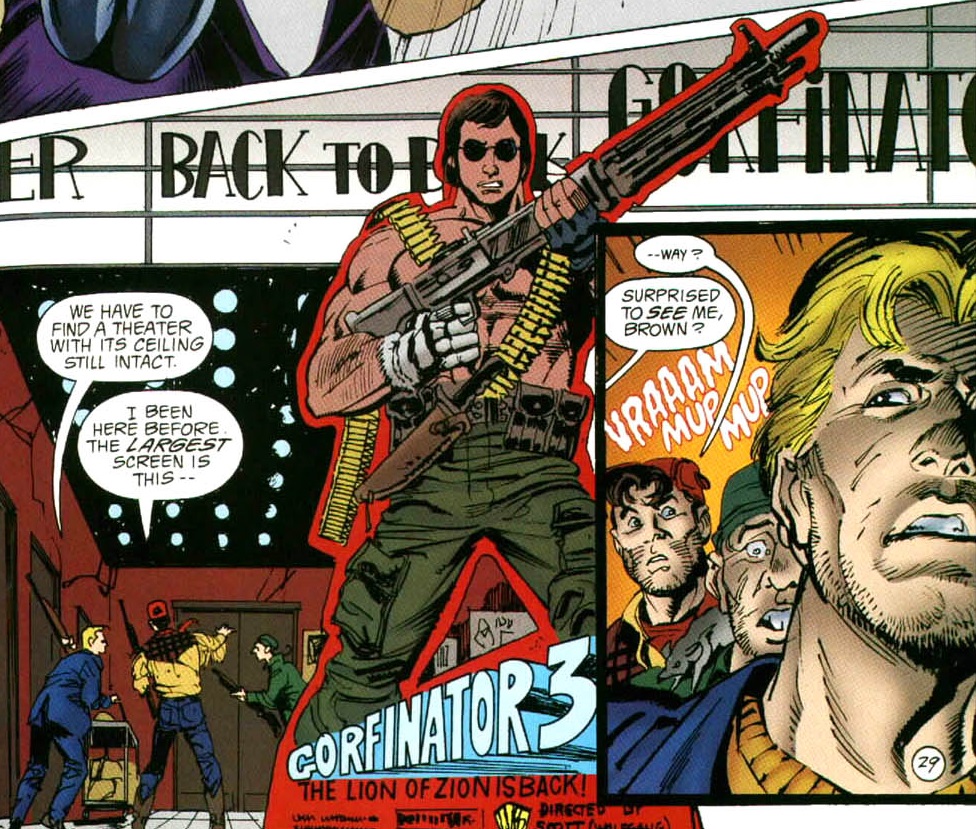 Huntress/Spoiler: Blunt Trauma
Huntress/Spoiler: Blunt Trauma
In Legends of the Dark Knight Annual #5, Batman even gets into a fight at the premiere of what looks like a Schwarzenegger vehicle called ‘Armageddon Man,’ as a gang of thieves tries to steal the print of the film. In an amusing bit of ironic juxtaposition, while throwing around batarangs and dodging bullets, the Caped Crusader thinks to himself: ‘The movie is just what the world needs. Another dose of gratuitous violence.’
That issue was penned by Chuck Dixon, who has contributed more to Gotham’s imaginary filmography than any other writer. Most notably, he wrote one of my all-time favorite Catwoman tales – the two-parter ‘More Edge, More Heart’ and ‘Box Office Poison’ – in which we follow the outlandish production process of the ultra-trashy flick They Lurk Below until its box-office success at the Gotham Plaza.
Dixon’s comics have also repeatedly conveyed the impression that this B-movie tradition goes way back. In the hardboiled one-shot Bullock’s Law, Harvey Bullock (by far the most notorious film buff in Batman’s supporting cast) meets a criminal from Black Mask’s gang at a cinema showing pictures with generic film noir titles: Dead Before Dawn, Seven the Hard Way, Kiss and Kill. In the underrated mini-series Batman vs Predator III, Tim Drake and his friends go to a drive-in marathon of 1950s schlock:
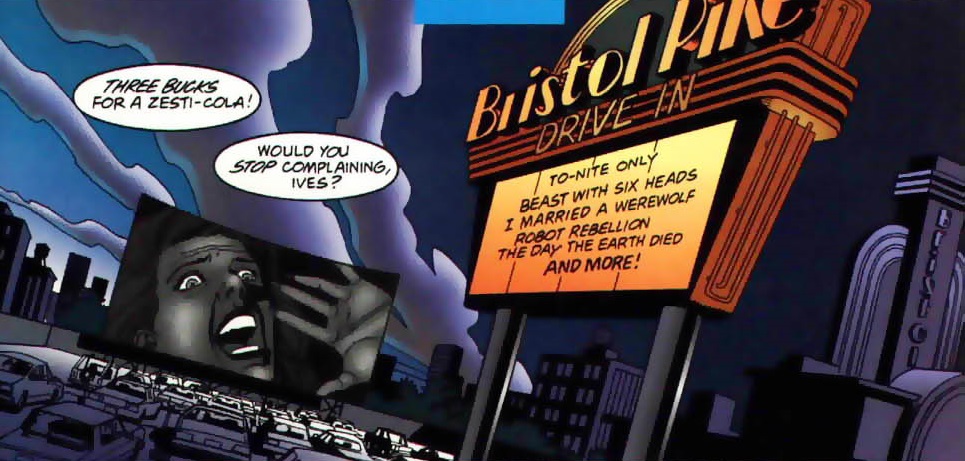 Batman vs Predator III #3
Batman vs Predator III #3
This sequence, by the way, leads to an awesome entrance by the semi-transparent Predator, as he jumps in front of the screen:
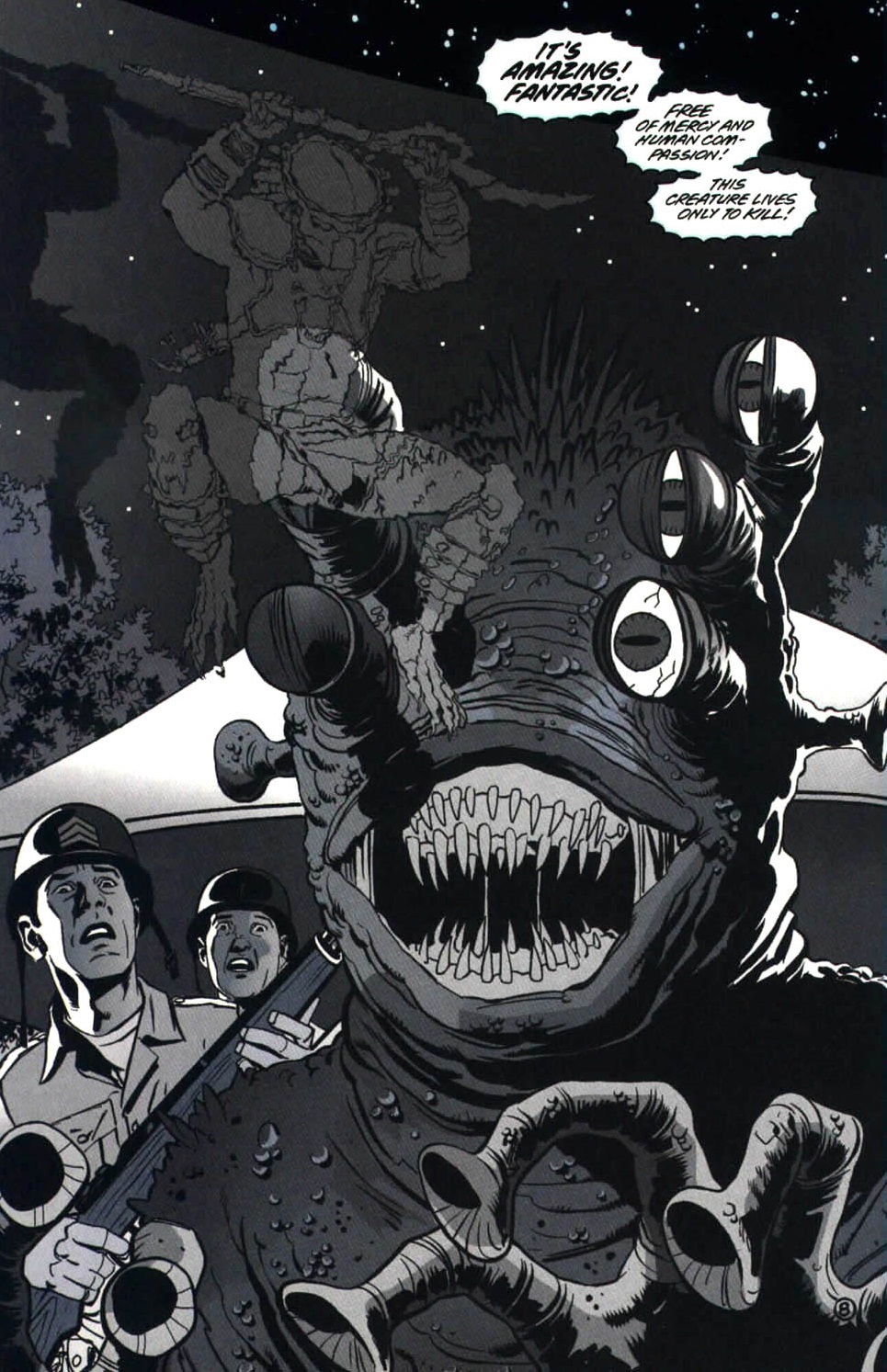 Batman vs Predator III #4
Batman vs Predator III #4
Chuck Dixon seems to enjoy the effect of using horror movies to frame a story’s horror vibe. In Robin: Year One #4, he pulled a similar trick with a proto-Frankenstein flick.
Speaking of classic horror movies, we know these were a big thing in Gotham City because of the character of Clayface, who was originally an actor specialized in this type of films, called Basil Karlo (a homage to real-world actors Basil Rathbone and Boris Karloff).
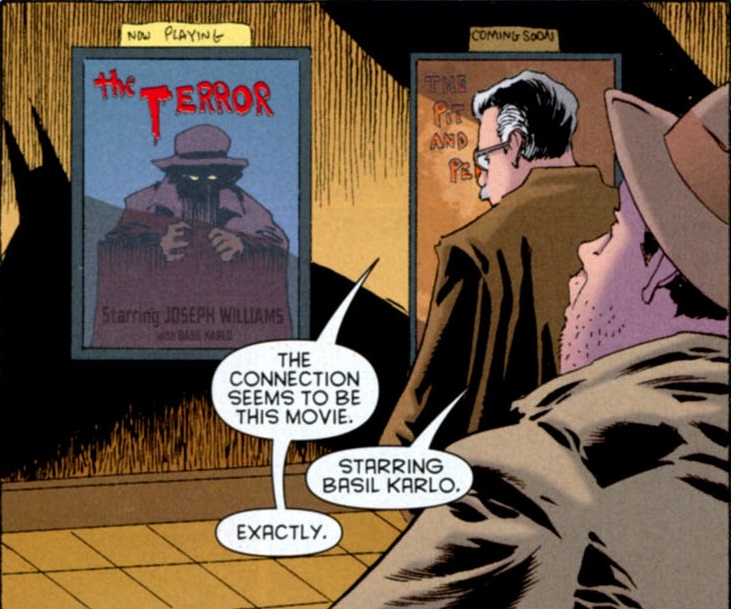 Joker’s Asylum: Clayface
Joker’s Asylum: Clayface
In the late eighties, Alan Grant used the character to satirize the evolution of this genre, giving us another glimpse at Gotham’s exploitation scene:
 Detective Comics #604
Detective Comics #604
(Basil Karlo’s rant continues for a few panels more, concluding with melancholy: ‘Monsters are no longer things of the shadows, lurking on the far fringes of the mind… They’re technicolor special effects that burst like rainbows from the screen!’)
Gotham being Gotham, though, I’m sure the screens are filled with more eccentric stuff than just blatant knockoffs of familiar movies. In such a crazy city, you know there has got to be a whole set of quirky subgenres.
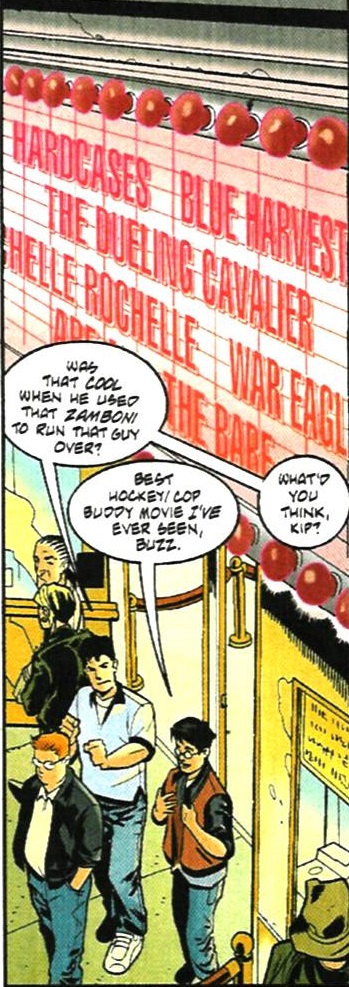 Robin (v4) #80
Robin (v4) #80
I don’t know about the other titles on that billboard, but Rochelle Rochelle is definitely a nod to Seinfeld… Likewise – and I have no idea if this was because of writer Chuck Dixon, penciller Scott McDaniel, inker Karl Story, or (appropriately) letterer John Costanza – there is a movie theatre in Nightwing that only shows fictional films mentioned on that famous ‘90s sitcom:
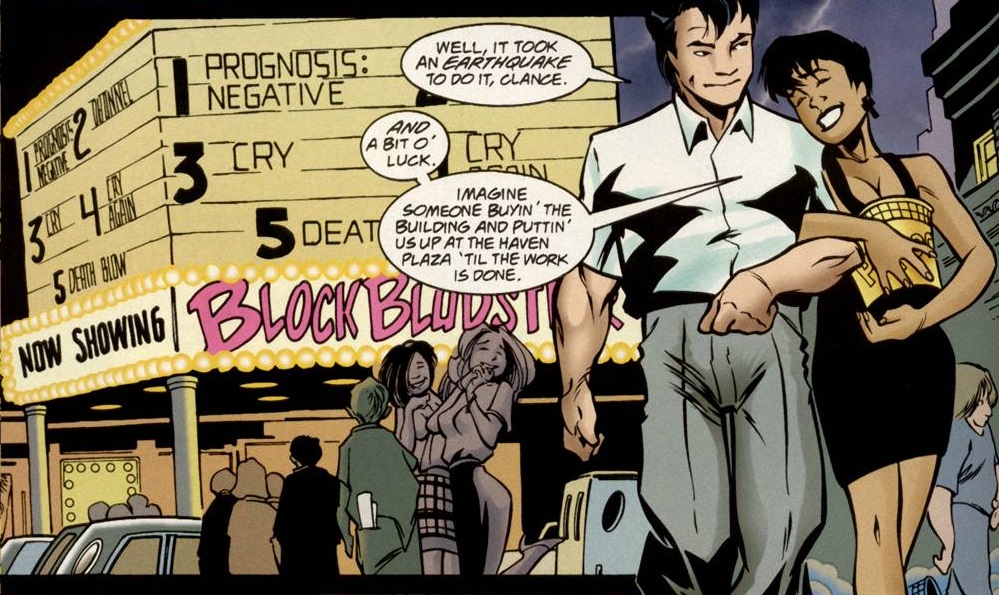 Nightwing #22
Nightwing #22
I’ll finish by revisiting ‘Sunset’ – Batman’s weird version of Sunset Boulevard – which tells us a little bit more about the city’s connection to the film industry. In this outrageous tale (written in a deadpan style by Tom Joyner, co-plotted by Keith S. Wilson, with somewhat underwhelming art by Jim Fern), we learn that there is an old movie lot in Gotham that has been abandoned since the silent era. Buster Keaton, Rudolph Valentino, Charlie Chaplin, and Gloria Swanson all worked there. The Dark Knight’s inner narration explains in a characteristically gloomy tone: ‘They say Hollywood killed it, but I know the truth. Nothing that bright and vital can survive in Gotham.’
Batman finds himself trapped in the lot by the silent film star Nina DeMille, who did the supposedly classic pictures Enchanted Moon, The Soldier Falls, and Child of Destiny (co-starring Douglas Fairbanks) and who also happens to be a vampire with hypnotic powers. Nina forces the Caped Crusader to act in her upcoming comeback movie (‘She calls it “Song of Solomon” – a horrible pastiche of cliché and melodrama that will run ten hours – if it’s ever made.’). As if that wasn’t torture enough, they also watch her old works:
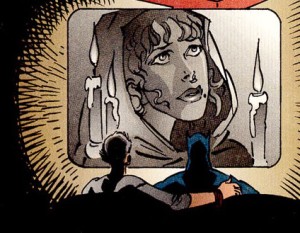 Legends of the Dark Knight #41
Legends of the Dark Knight #41
Alfred Pennyworth saves his master in the end, so Nina DeMille never actually finishes shooting Song of Solomon. Judging by the sneak peeks we get, though, the movie would’ve been an epic piece of camp:

